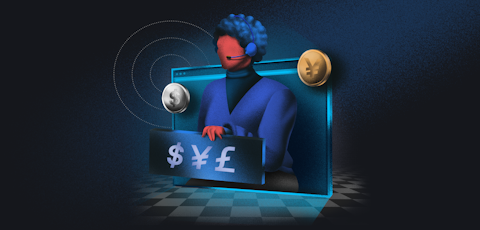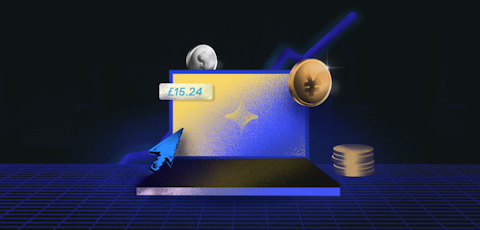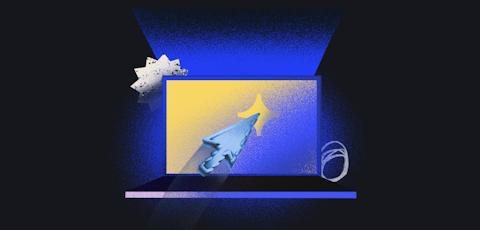Tiered pricing: the ultimate pricing strategy to incentivize your customers

What is tiered pricing?
Tiered pricing is a method where sellers segment the pricing of their products or services to suit their various target markets. By optimizing and changing up your offering between each of the segments, you appeal to a wider (and more varied) customer base as you provide for different demand rates and price points.
An example of this would be:
Unit 1 : $200
Units 2-4: $170 per unit
Units 5-9: $160 per unit
Units 10-19: $140 per unit
Units 20+: $120 per unit
As you can see, as the tiers (or the demand for your product or services) go up, a greater discount is applied to the units within the separate tiers. This creates the incentive for customers to buy more, because the more units they are purchasing, the more discounted units they are purchasing. Who doesn’t love a discount?
The quantity discount of your product works great for larger businesses or customers that simply have a higher demand for your product. It also works well to incentivize smaller customers to up their demand, just so they can take advantage of the deal.
Tiered pricing vs volume pricing
There is often some confusion between tiered pricing and volume pricing because they are both based on a quantity discount. The subtle difference is all down to the unit thresholds, which makes a difference to the total discount offered to the customer.
With tiered pricing, the product or service is priced for the range (or segment) in which it's included. The way the discount works within a tiered pricing strategy is that the price per unit decreases once each quantity within a tier has been sold.
Using the same example as above, if a customer were to choose to purchase a number of units within the third tier for 5-9 units, the first unit would be at standard price ($200), the following 2-4 units would be at a discounted rate ($170), and the units purchased within the 5-9 range would be at a further discounted rate ($160).
With volume pricing, the amount of discount is still determined by the number of units purchased by the customer, however, the discount is applied to all units. The greater the demand for your product or service, the greater the discount on each and every unit within the set price ranges.
Say a customer of yours purchases 6 units . If you were using the tiered pricing model, your sale would total at $1,030 ($200 + (3 x $170) + (2 x $160), whereas if you were using the volume pricing model, the total sale would come in at $960 (6 x $160).
The benefits of a tiered pricing model for SaaS businesses
The tiered pricing model works best for businesses that sell licenses, seats, or the likes, making it a popular option for software businesses. As mentioned, the tiered pricing model means the seller of the product or service receives more profit than with the volume pricing model, as less units are offered at a discounted rate with whatever tier is chosen. Take a look at these graphs:
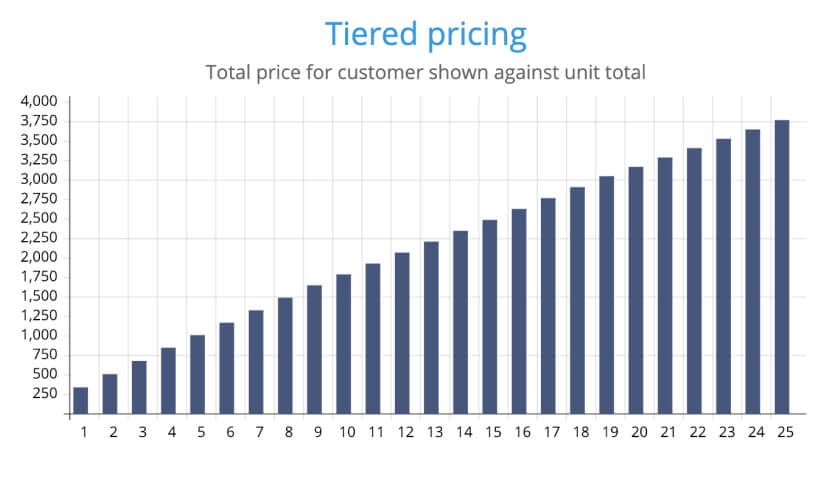
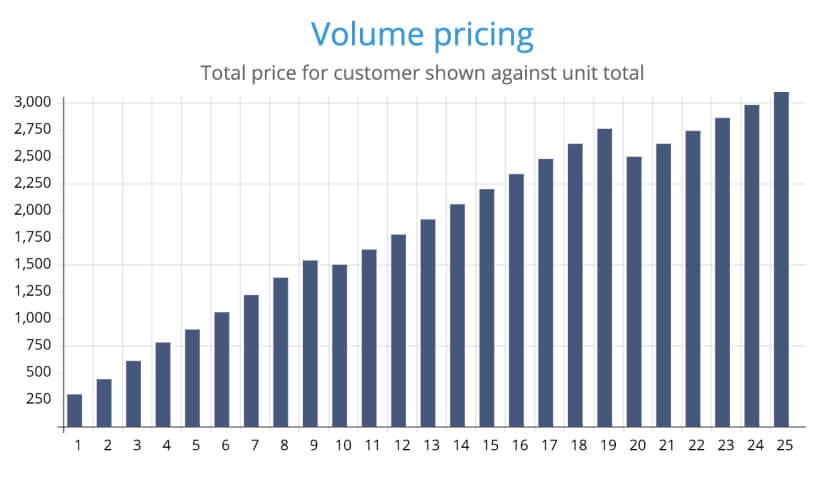
When you choose a tiered pricing model, you never have any drop points in profit. It’s a steady rise in revenue as the number of purchased units goes up. Whereas, with the second graph, you can clearly see that when a customer buys a certain amount of units and qualifies for a different level of discount, the total price significantly drops when a discount threshold is crossed.
This drop happens because of the significant discount offered for all units through the volume pricing method. In this example, when the demand hits the bulk of 10 units, the profit you receive drops below that of 9 units because the discount has been applied to each of the 10 units. It’s a great deal for the businesses buying higher volumes of units, but less so for the seller.
But it’s not just about revenue. The other opportunities that arise from this kind of pricing model are ideal for fast-growing SaaS businesses. Take a look:
- Appeal to a wider audience : providing an offer for companies of different sizes, budgets and priorities means you will attract a wider range of customers
- Boosted conversion rates : if your pricing model is meeting a wider range of customer demands, your conversion rate should increase too
- Upselling potential : a greater chance of upselling, whether it’s down to a change in circumstances for a company and they need to upgrade to a higher tier, or the appeal of the discount sees them buying a larger quantity in the first sale
- Better customer experience : pricing and offering customized to suit them - plus potential discounts - means happy customers
- Focus on individual target audiences : an easier win for your sales team, and a better match for your specific target audiences
Volume pricing, on the other hand, is best employed by businesses with tangible materials as a product, where stock levels, storage, timing, and general inventory control are more of a consideration. Volume pricing is a real benefit when it comes to moving excess inventory quickly or selling materials in large volumes, thanks to more customers opting for larger orders.
The difference between a tiered pricing model and a tiered pricing strategy
A tiered pricing strategy differs from the definition of a tiered pricing model. Tiered pricing, or price tiering, as a strategy is all about how you tailor your pricing to best meet your customers’ needs.
The standard approach for SaaS companies is to have three tiers with different price points. Something like: Basic, Standard, Premium. That’s not to say you can’t have more than three tiers, but it is important you don’t overwhelm potential customers with a million different package options - keep it as simple as possible.
Take your time when it comes to figuring out the value and cost of each tier too. It all comes down to what your software allows for, and the value or metric you want to price by. For example, you may base each tier on quantity, usage, feature allowances, or even differentiate them between how each of your target audiences best relates to your product.
Examples of tiered pricing in action
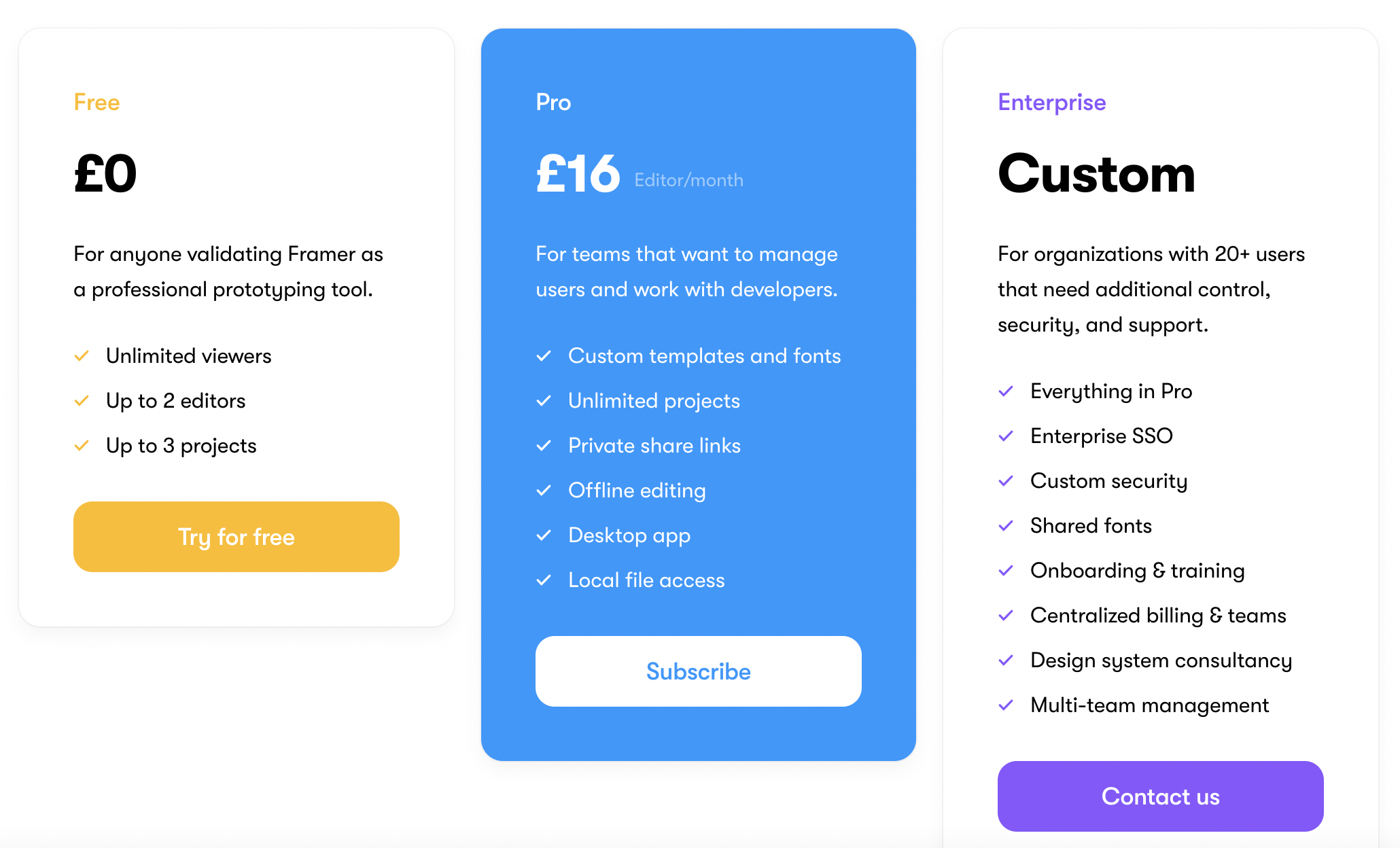
Take Framer's pricing plan, for example. Framer opts for the standard three-tier pricing, with a standardized ‘Pro’ option with set features and services included, a custom ‘Enterprise’ option where all the bells and whistles are on offer, and it introduces a Freemium version too, which is limited to just a handful of features.
Freemium provides a limited, but worthy trial of the product, which is likely to leave the customer wanting more. Hello, upsell opportunity.
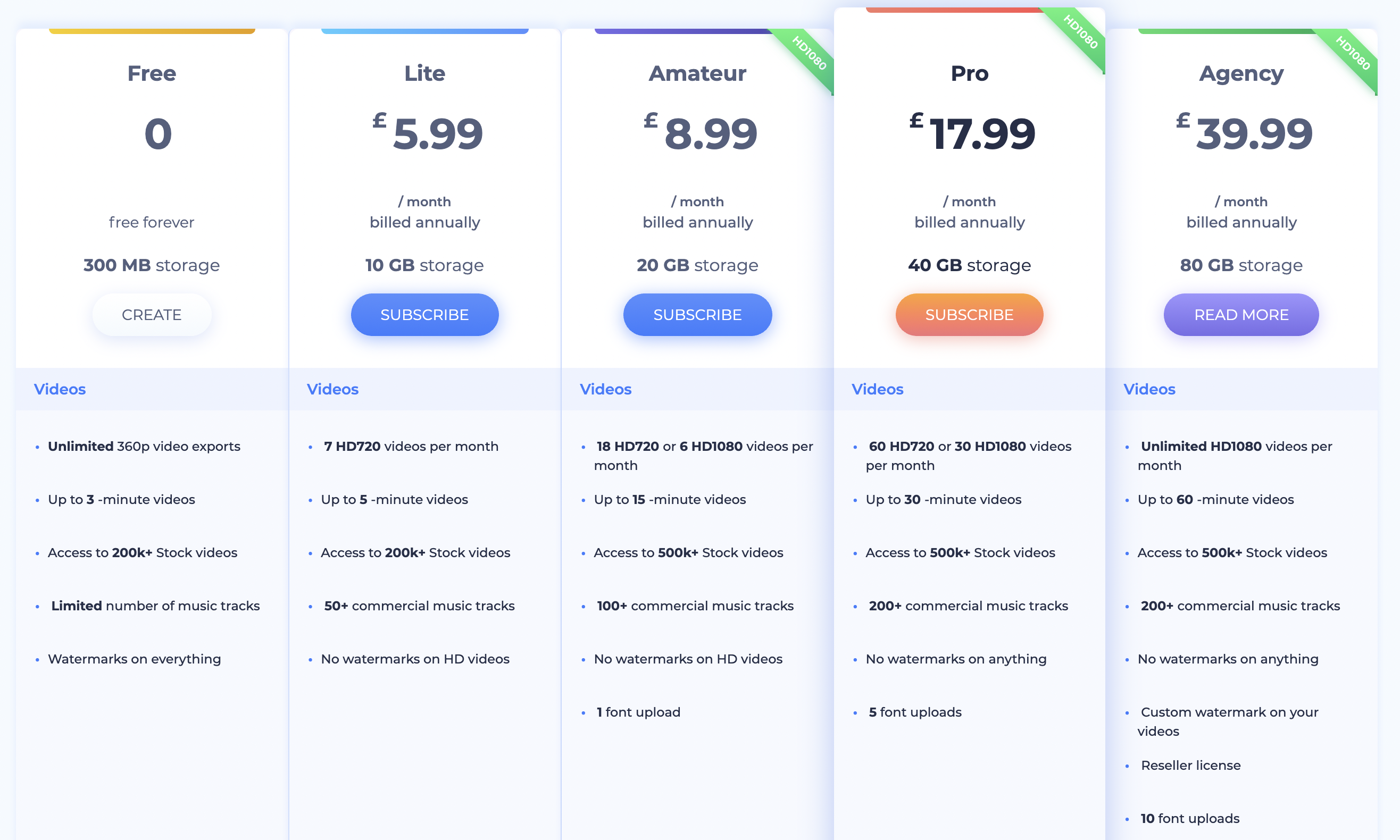
Renderforest is another example of a business that has both a Freemium and a custom option, with the latter aimed at agencies. They’ve also braved a few more options for their tiered pricing - and it works. They play on how their target audiences relate to their product; the different scales and contexts of use, whether that’s professional or personal. Each higher tier includes more storage than the last, while 'Amateur' and above get a greater level of service and quality of video included too.
So, what's next?
All companies benefit from the promotion of quantity sales; it’s all about figuring out what works best for your product and your customer base.
If you’re not sure where to start when it comes to which pricing structure makes sense for you, check out Paddle’s handy pricing strategy guide .
Find out more about Paddle
Once you've worked out the best pricing strategy for you, Paddle can help you out even more. Specifically made for SaaS businesses, Paddle has a number of solutions that help CEOs accelerate and scale their company by taking away the stresses of payment and billing processes.
For example, it's no secret that managing and updating your customers' lifetime payments and any price modifications can be hard to keep on top of, but with the advice and support you receive when partnering with Paddle, it's one thing you don't have to worry about.

